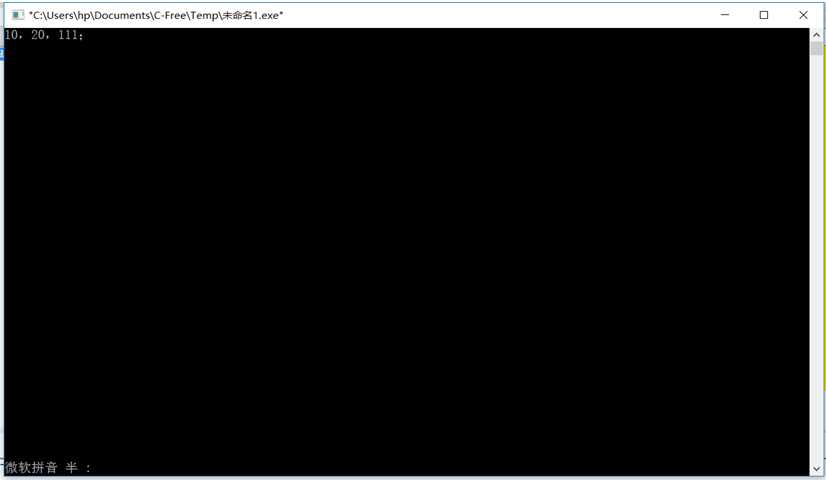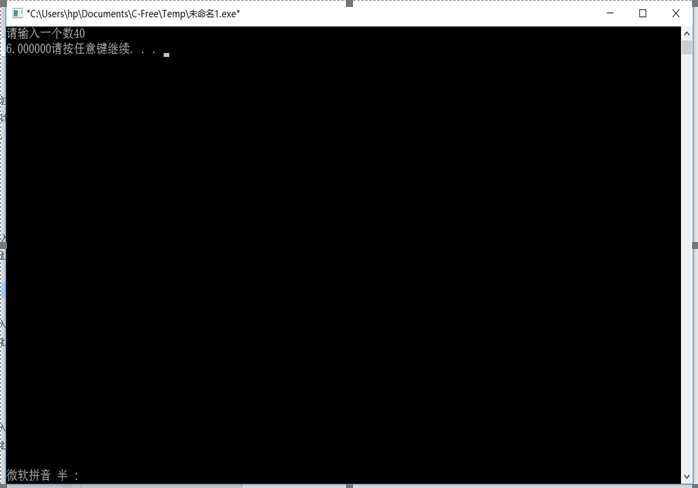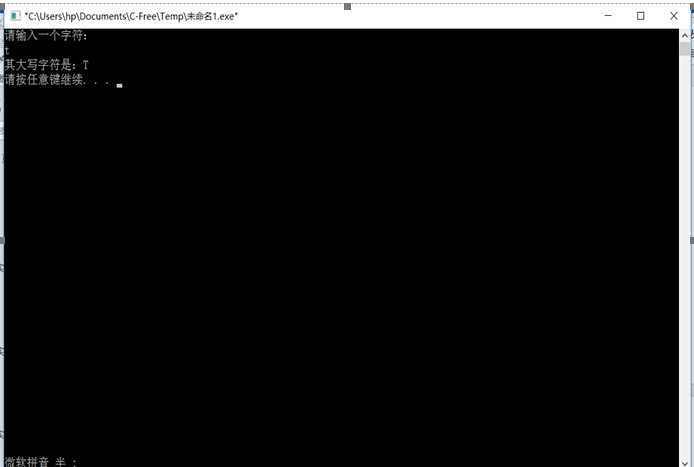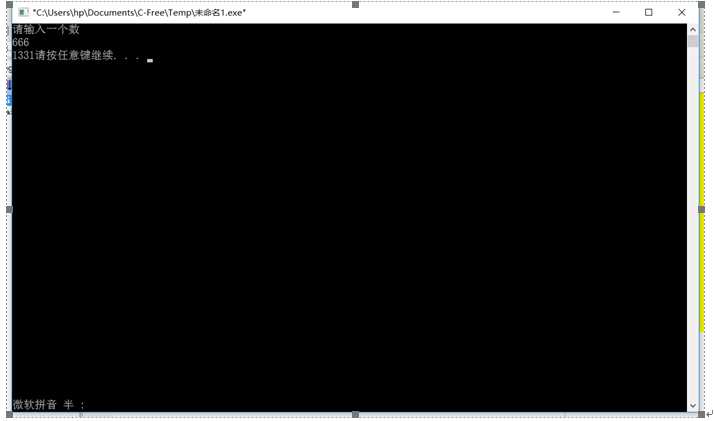标签:
实验2-1 输入3个数,并按由大到小的顺序输出。 实验要求: 编写一个C程序,输入3个数,并按由大到小的顺序输出。 参考: 源码: #include <stdio.h> int main(){ int a,b,c,t; printf("10,20,111;"); scanf("%d%d%d",&a,&b,&c); if(a<b){ t=a; a=b; b=t; } if(b>c){ printf("%d\t%d\t%d\n",a,b,c); } else if(c>a){ printf("%d\t%d\t%d\n",c,a,b); } else{ printf("%d\t%d\t%d\n",a,c,b); } return 0; } 运行结果抓图

实验2-2 从键盘上输入x的值,并根据计算输出y的值 实验要求:从键盘上输入x的值,并根据计算输出y的值 提示: 1. 使用数据函数需要#include <math.h> 2. 开方函数:sqrt(x) 3. 绝对值函数:fabs(x) 源码 #include <stdio.h> #include <math.h> int main(){ float x,y; printf("请输入一个数"); scanf("%f",&x); if(x>4){ y=sqrt(x-4); printf("%f",y); } else if(x<-5){ y=fabs(x); printf("%f",y); } else{ y=x+3; printf("%f",y); } return 0; } 实验结果:

实验2-3从键盘上输入一个字母,如果是小写字母,将其转换成大写字母并输出。 实验要求:从键盘上输入一个字母,如果是小写字母,将其转换成大写字母并输出。 提示: 1. 输入字符给变量c char c; 方法一:c = getchar (); 方法二:scanf("%c",&c); 2. 输出字符变量c 方法一:putchar(c); 方法二:printf("%c",c); 程序源码 #include <stdio.h> int main() { char c; printf("请输入一个字符:\n"); scanf("%c",&c); printf("其大写字符是:%c\n",c-32); } 运行结果抓图

实验2-4从键盘上输入x的值,并根据计算输出y的值 实验要求:从键盘上输入x的值,并根据计算输出y的值 程序源码 #include <stdio.h> int main() { int x,y; printf("请输入一个数\n"); scanf("%d",&x); if(x<1){ y=x; printf("%d",y); } else if(1<=x<10){ y=2*x-1; printf("%d",y); } else{ y=3*x-11; printf("%d",y); } return 0; }

实验心得
通过这次试验,我明白了C语言一些使用技巧,使我朝着C语言这大门又走进了一步,虽然这次实验比上次多了些步骤,但也让我感受到C语言的魅力,这次作业教得晚了,下次作业我会早点交
符瑞艺 160809228_C语言程序设计实验2 选择结构程序设计
标签:
原文地址:http://www.cnblogs.com/furuiyi228/p/5915545.html